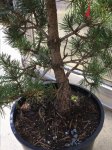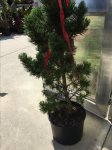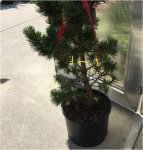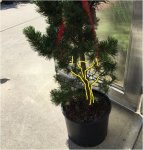Philthburger....
That chop seems a waste...
That second whorl is good for shit.
I would cut all the branches off that second whorl. RED.
To allow light to the bottom whorl. NOW!
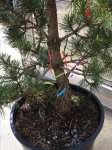
And let it be.
Should allow you at least 2 years to think about this...
I'm seeing optimal as yellow being a new lead...
And blue being your first branch...
But blue is weak. So let it go next year to see if it will stay valid.
If it does...you can lop purple if it is not a better lead.
Than wait to chop the whole top at Green at your leisure.
3-x years ish.
If that weak blue branch kicks it.
Second most optimal seems Yellow as your first branch and purple as your new lead.
Looking again that may be best straight away.
Basically....the smaller you start with at the bottom ....
The more control you have.
Younger branches will still backbuds close...and you can keep it managed.
The trade off is health.
The thicker options will provide more energy and allow you to cut the whole top off sooner.
But you are limited in how much you can move them, and keep nodes close to the trunk.
Either way...
I don't think that bottom whorl is going to grow out of usable for at least three years.
So you got mad time.
But I would open it up and consider that your tree.
That's how the Heavy hitters do it.
I'm just a parrot...who hates crackers!
Sorce

